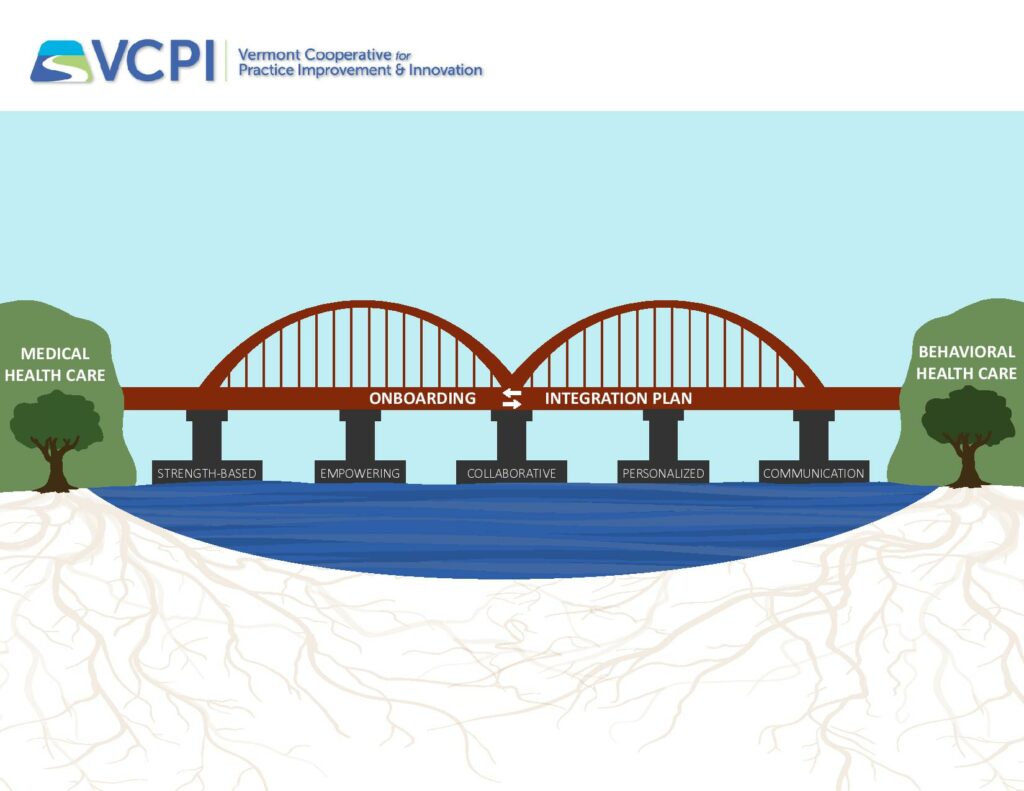May 25, 2021
The Situation
The Vermont Cooperative for Practice Improvement and Innovation (VCPI) is a statewide diverse membership cooperative of healthcare providers, agencies, associations and families working to support practice improvement and workforce development in the Vermont system of care.
One of VCPI’s projects, Children’s Health Integration, Linkage, and Detection (CHILD), aims to integrate pediatric mental health and primary care for families and children. The primary resource used to guide the integration process was the Pediatric Integrated Health Care Implementation Model – One Location, One Visit: A Manual for Integrating Mental Health Services into a Pediatric Practice, developed by Michelle Duprey, LMSW, Integrated Health Care Director, Starfish Family Services (2016).
A challenge in integrating these systems is that although the siloed organizations know well the concepts recommended in the model, there was no clear sense of ownership of the various pieces. VCPI contracted with GLP to work with a diverse team of providers (the Springfield Family Wellness Team) to imagine what an integrated system would look like and develop an integration plan with four main components: Communication, Onboarding, Integration, and Evaluation.
What GLP brought to the table was a principle-based process that helped the groups in their journey to do priority work with maximum impact in a way that values, invites and includes all voices and stakeholders.
The Journey
Over a three-month period, GLP worked with a group of 8-10 leaders every 2 weeks in structured facilitated meetings. We led the group in creating a visual metaphor to describe their ideal integration process. The group chose a bridge to represent the connections between two systems of care in their community.

The bridge represents the journey of onboarding new staff and the integration of physical and mental health care to become a stronger and more efficient wellness system. The columns represent agreed-upon foundational principles: strength-based, empowering, collaborative, personalized and communication. The trees represent the two organizations in the community providing care and working on the integration process. The roots under the water represent the integration of the two organizations to strengthen both health care systems. The water represents the place where innovation and ideas will continue to flow.
To encourage a sense of trust among the leaders in the group, GLP created a set of affirmation tools to model how members of the team could support the progress and achievements of the group. These tools were structured into the regular meetings and gave team members space to acknowledge each other and positive steps to take forward.
Open questions were used to imagine possibilities, describe new ways of working, determine needs and wants for new systems; and decide what would work best for the integration plan. We wanted team members to experience the power and potential of well-crafted open questions.
The Impact
The team developed a comprehensive integration plan that they are using to map their steps and measure their progress. Throughout the process, the team came together and felt joint ownership of the vision for this more holistic initiative. They learned in walking the journey together the benefits of the integrated approach and more importantly, they came to understand the value of their working on the plan together. The team ended this part of the process with real feelings of ownership, pride and understanding of why they do what they do.
The Springfield team created a template for other Vermont communities who also have a CHILD grant to follow this shift in how healthcare and mental health services can be offered in a more holistic way. The guide can be used in other Vermont communities as they embark on their integration process.



